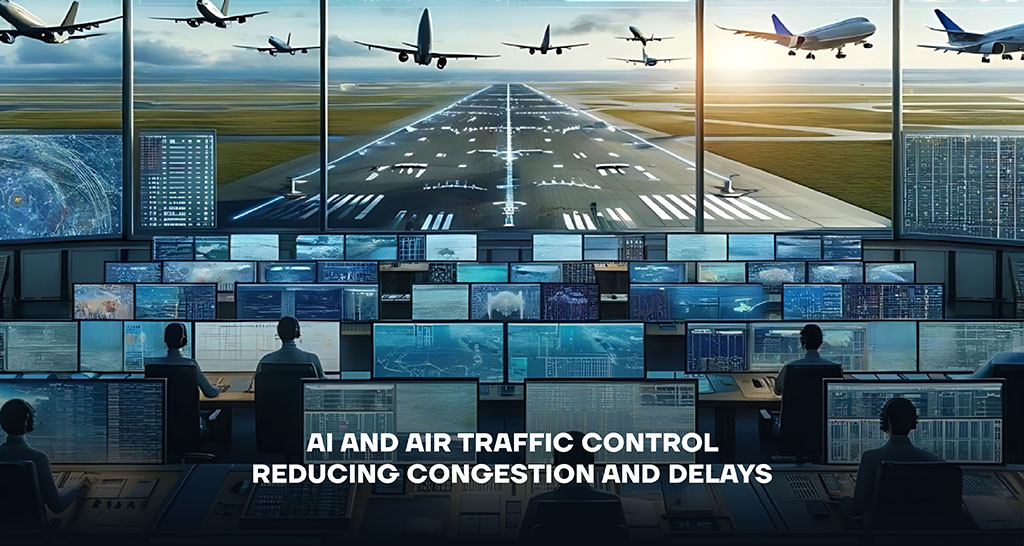Air travel has emerged as a fundamental aspect of contemporary life. In 2023, over 4.5 billion passengers were recorded flying worldwide, and this figure is anticipated to rise annually. This increase in air traffic presents significant challenges in managing airspace and ensuring both the safety and efficiency of air travel. A crucial element of this management is air traffic control, which oversees the secure and effective movement of aircraft in the air and at airports. Nevertheless, despite technological advancements, the air traffic control system has faced difficulties in accommodating the growing demand, frequently resulting in delays, congestion, and operational inefficiencies.
The Challenges of Air Traffic Control
Air traffic control represents a highly intricate and essential function, necessitating a careful equilibrium among safety, efficiency, and responsiveness. Conventional air traffic management systems depend significantly on human controllers, who are tasked with overseeing numerous aircraft at once and engaging in communication with pilots to guarantee safe distances and punctual arrivals.
The system is currently encountering multiple challenges that may result in inefficiencies, including:
Increased Air Traffic: As the number of individuals traveling by air continues to rise, airspace is becoming progressively congested, especially in the vicinity of major airports. This increased density results in delays, extended flight durations, and greater fuel usage, all of which may have significant environmental consequences.
Limited Resources: Human air traffic controllers can oversee only a finite number of aircraft simultaneously, and their capacity to evaluate the comprehensive air traffic scenario is restricted by the existing technology. Although radar and radar-dependent systems are employed, they frequently offer restricted visibility of air traffic, particularly in isolated areas or when aircraft are flying at elevated altitudes.
Weather and Unpredictability: Adverse weather conditions, including storms, fog, and turbulence, can significantly impact flight schedules and complicate air traffic management. Air traffic controllers must swiftly adjust to these evolving situations while prioritizing the safety of all aircraft.
Operational Delays: In numerous instances, airport delays are attributed to air traffic congestion, particularly during peak times or in heavily trafficked areas. The dependence on antiquated scheduling systems, along with the inherent limitations of human information processing, frequently intensifies these delays.
How AI Can Transform Air Traffic Control
AI possesses the capability to address these challenges through various means. Below are several critical areas in which AI can enhance air traffic control systems.
- Predictive Analytics for Traffic Flow Management
One of the key advantages of artificial intelligence lies in its capacity to forecast future trends by utilizing historical data alongside real-time information. Through the application of machine learning algorithms, AI can examine extensive datasets, such as weather conditions, air traffic, and aircraft performance, to identify possible congestion areas and delays.
- Autonomous Traffic Management
AI can enhance autonomous traffic management by enabling intelligent systems to assist or fully assume specific control functions that have typically been handled by human operators. This encompasses the implementation of AI-driven systems capable of optimizing flight routes, ensuring safe separation between aircraft, and dynamically modifying altitudes and speeds in response to real-time data.
- Enhanced Communication and Coordination
Effective communication between air traffic controllers and pilots is essential for the management of air traffic. Nevertheless, the dependence on verbal exchanges may occasionally result in misunderstandings or delays. Artificial intelligence has the potential to improve this communication by converting intricate flight data into straightforward, actionable insights.
- Automated Conflict Detection and Resolution
AI has the capability to support air traffic controllers by automating the identification of possible conflicts between aircraft. Through real-time analysis of flight paths, AI systems can recognize instances where two aircraft might be on a collision trajectory or when they are in proximity, thereby generating alerts for controllers.
- Optimizing Airport Operations
Congestion is not limited to the airspace; it is also a critical concern on the ground. Airports, particularly those that are heavily trafficked, frequently encounter congestion on runways, taxiways, and at gates, resulting in delays. The implementation of artificial intelligence can enhance airport operations by streamlining the scheduling and assignment of gates, overseeing ground support equipment, and forecasting patterns of airport congestion.
Conclusion
The incorporation of artificial intelligence into air traffic control is not merely a vision for the future; it is currently in development and holds significant promise for enhancing the efficiency, safety, and capacity of air travel. By leveraging AI’s predictive analytics, autonomous traffic management systems, and automated conflict resolution, the aviation sector can effectively tackle the increasing issues of air traffic congestion and delays. Additionally, AI can streamline airport operations and facilitate better communication among air traffic controllers, pilots, and airlines, resulting in a more seamless and efficient travel experience for passengers.
As air traffic continues to expand, the integration of artificial intelligence technologies will be essential for maintaining safety in the skies and enhancing the efficiency, sustainability, and reliability of air travel. The future of air traffic management is expected to be progressively influenced by AI, providing significant advantages to the industry and the countless passengers who depend on air travel daily.



Discussion about this post